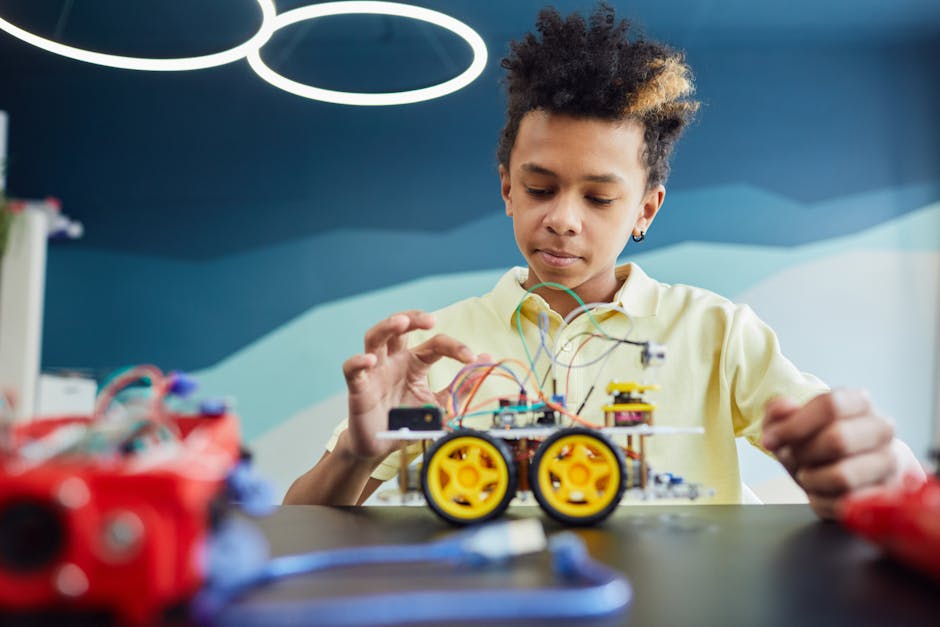
In an era increasingly defined by artificial intelligence and automation, the foundational skills nurtured in robotics competitions are more critical than ever. A recent regional competition, a significant stepping stone towards the National Competition, brought together high school students in the Tochigi TV area to compete with their handmade robots. This event, far from being just a display of youthful enthusiasm, offers a fascinating glimpse into the future of technology and the innovators who will build it.
The Spark of Innovation: High Schoolers and Handmade Robots
The sight of high school students meticulously crafting and programming their handmade robots is a testament to grassroots innovation. These aren't just toys; they are complex machines embodying principles of mechanical engineering, electronics, and software development. Students gather to compete in their technical skills, demonstrating not only their ability to follow instructions but, more importantly, their capacity for creative problem-solving and original design.
Each robot, a product of countless hours of design, assembly, and debugging, represents a unique solution to a common challenge. From navigating intricate obstacle courses to performing specific tasks, these young engineers are learning by doing. They grapple with real-world constraints, overcome technical hurdles, and iterate on their designs—skills that are indispensable in any cutting-edge industry. The energy and ingenuity displayed in these regional events, such as the one in the Tochigi TV area, are essential for fostering the next generation of tech leaders.
Beyond the Circuit Board: Impact on Future Tech
The implications of these competitions extend far beyond the immediate thrill of victory. These high school students are the future roboticists, AI developers, and hardware engineers who will drive the next wave of technological advancement. Their early exposure to robotics, programming, and competitive problem-solving lays a robust foundation for careers in fields that are rapidly transforming our world.
Consider the broader landscape: autonomous vehicles, advanced manufacturing, personalized healthcare robots, and smart city infrastructure. Each of these relies heavily on the kind of interdisciplinary thinking and practical application that these young innovators are mastering. By designing handmade robots, students are not merely learning about existing technologies; they are actively participating in the evolution of new ones. They are developing an intuitive understanding of how hardware interacts with software, how sensors gather data, and how algorithms translate data into action – fundamental concepts for the future of AI and IoT.
The Road to the National Stage and Societal Benefits
The pursuit of the National Competition serves as a powerful motivator, pushing students to refine their skills and expand their knowledge. This ambition helps create a pipeline of talent, ensuring a steady stream of skilled professionals ready to tackle the complex challenges of tomorrow. The benefits to society are profound:
- Advancing Automation: These students will contribute to making automation more sophisticated, reliable, and accessible, leading to safer workplaces, more efficient logistics, and enhanced productivity across industries.
- Revolutionizing Daily Life: The innovations they develop will manifest in more intelligent home assistants, assistive robots for the elderly or disabled, and more intuitive interfaces for everyday technology, bringing tangible benefits to users.
- Driving Economic Growth: A robust ecosystem of skilled roboticists and engineers fuels economic growth by fostering new industries, creating high-value jobs, and maintaining a competitive edge in the global technology race.
- Inspiring Future Generations: The success stories emerging from these competitions inspire younger students to pursue STEM fields, creating a virtuous cycle of learning and innovation.
Ultimately, the competitions where high school students compete with their handmade robots are more than just contests. They are incubators for the future, demonstrating how early engagement with cutting-edge technology can shape not only individual careers but also the trajectory of our entire society. The ingenuity displayed by these young minds today promises a future where technology is not just powerful, but also thoughtfully designed and deeply integrated into our lives for the betterment of all.
Comments
Post a Comment